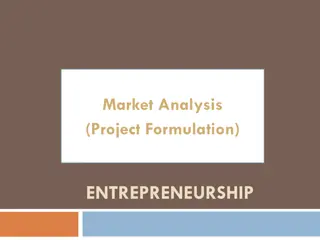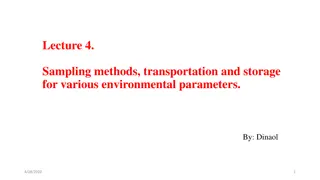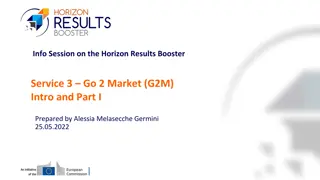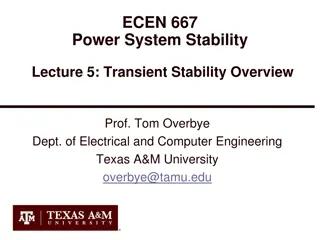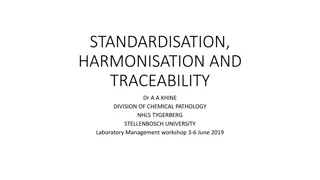Contact Information and Results Analysis
This research investigates the implications of contact information on result analysis within a specific context. It delves into the correlation between provided contact details and the depth of result interpretation, offering valuable insights for future studies in similar domains.
Download Presentation

Please find below an Image/Link to download the presentation.
The content on the website is provided AS IS for your information and personal use only. It may not be sold, licensed, or shared on other websites without obtaining consent from the author.If you encounter any issues during the download, it is possible that the publisher has removed the file from their server.
You are allowed to download the files provided on this website for personal or commercial use, subject to the condition that they are used lawfully. All files are the property of their respective owners.
The content on the website is provided AS IS for your information and personal use only. It may not be sold, licensed, or shared on other websites without obtaining consent from the author.
E N D
Presentation Transcript
BUDGETING SENSITIVE TO DEMOGRAPHIC DIVIDEND Mali Mali Latif DRAMANI Latif DRAMANI Coordinator Coordinator Centre de Recherche en Centre de Recherche en Economie G n rationnelle Economie G n rationnelle Sadou DOUMBO Sadou DOUMBO Director Director General General National Demographic Demographic Dividend Dividend Observatory National Observatory Mali Mali
Plan of Plan of presentation presentation Introduction Demographic Dividend Monitoring Index for Mali Constructing BSDD: the budgetary functions Linking DDMI to budgetary functions: the results Conclusion and public policy recommendations
Introduction Introduction Researches and other investigations are being conducted on Demographic Dividend; Many recommendations are made, inviting governments to (i) invest more on women, girls and youth, (ii) take actions for rapid demographic transition and (iii) encourage good governance For For developing developing countries, countries, the the national national budget conduct conduct the the development development process process and and reach objectives objectives. . Due Due to to relative relative low low level level of of those those budgets budgets ( (5 5, ,6 6 billions enormous enormous needs needs and and social social demand, demand, how accelerate accelerate DD DD harnessing? harnessing? After After integrating integrating DD DD on on national national and and sectorial necessary necessary to to drawn drawn budget budget structure structure sensitive except except more more interest interest to to investing investing on on DD DD pillars budget is is generally reach national national development generally the development goals the principal principal tool tool to to and goals and billions USD, budget structure structure can USD, 2020 2020) ) and can help and help how budget sectorial policies sensitive to to DD pillars. . policies and DD harnessing harnessing so and strategies, strategies, it it is is so we we can can
DDMI : Definition Dimension 1 Lifecycle Deficit Synthetic tool allow comprehension of whole information related to DD Dimension 5 Networks and Territory Dimension 2 Life quality Monitor DD and Evaluation system for country and sub-regions Virtual representation of the synthetic Indicator / Index Dimension 4 Extended Human Capital Dimension 3 Poverty dynamics
Mali DDMI 2015 : Mali DDMI 2015 : 0,4220 0,4220 1 1ICDE ICDE ICDE: ICDE: 0,426 0,426 0.6 0.6 IQCV: IQCV: 0,549 0,549 ISRT ISRT IQCV IQCV 0.2 0.2 ISSP: ISSP: 0,546 0,546 -0.2 -0.2 IDHE: IDHE: 0,402 0,402 IDHE IDHE ISSP ISSP ISRT: ISRT: 0,247 0,247
Reorganizing budget structure (4 budget components & 8 functions) Note: The Human Capital function regroup all expenditures (operating, investments and transfer) on health and education for all Department, not only Education and Health Ministries Human Capital Human Capital Governance Governance Security Security Institutions Institutions Education Education Health Health Economic Economic structure structure Professional and Social Professional and Social Networks Networks Energy Energy - - Engineering Engineering Other Other Economic Economic sectors sectors Leisure Leisure Communication Communication 6
From From actual actual budget functions functions budget programme programme to DD sensitive budget to DD sensitive budget Governance Governance Institutions Security Economic Economic structure Energy - Engineering Others economics sectors Professional and Social Professional and Social Networks Networks Communication and Society Leisure Human Capital Human Capital Education Health classification functional classification Democratie Democratie and Governance Governance Peace Peace, Security and , Security and Social Social cohesion cohesion Inclusive Inclusive Growth Growth and Economic Economic Transformation Transformation Environment Environment and Climatic Climatic changes changes Human Capital Human Capital and DD sensitive structure DD sensitive structure structure classification classification classic) ) and ( (classic Actual functional and Actual
Budgeting Budgeting sensitive to DD: The sensitive to DD: The analysis 1| Restructuration of the classic budget (2008 2018) to functional budget (the 4 functions) analysis process process 2| linking functions to DD dimensions 3| Modeling and determination of budget elasticities 4| Analysis of budget sensitivity 5| Propose budget programmating to reach more gain on DD harnessing
Determination of budget Determination of budget elasticty elasticty for each subdimension for each subdimension Elasticity function : 3 ??????_?????= ???log ???????? + ?? ?=1 k k j j 1 2 3 Fonctionnement Investment Transfers / Subventions 1 2 3 Health Education Institutions 4 .... 8 Security Economy
Budget structure Budget structure Mean (2008 Mean (2008 - - 2018) functional budget structure for 2008 2018) functional budget structure for 2008 - - 2018 2018 TRANSFERS & TRANSFERS & SUBVENTIONS SUBVENTIONS TOTAL TOTAL FONCTIONNEMENT FONCTIONNEMENT INVESTMENT INVESTMENT 2,6% 1,0% 1,8% 5,4% 5,4% Health HUMAN CAPITAL 13,9% 2,0% 2,3% 18,2% 18,2% Education Education 7,3% 3,8% 1,9% 13,1% 13,1% Institutions Institutions GOVERNANCE 9,1% 7,5% 0,0% 16,6% 16,6% Security Security Professional Professional network network 0,0% 0,5% 0,4% 1,0% 1,0% PROFESSIONAL AND SOCIAL NETWORK 1,0% 1,0% 3,1% 5,1% 5,1% Social Network Social Network Energy Energy - - Engineering Engineering 0,8% 7,9% 2,2% 10,9% 10,9% TRANSFORMATION OF ECONOMY 7,2% 16,3% 6,1% 29,7% 29,7% Economy Economy Total Total 42,0% 42,0% 40,1% 40,1% 18,0% 18,0% 100,0% 100,0% 10
2021 budget structure 2021 budget structure analysis Application of the methodology to the 2021 budget project give the structure below, not too far from National development plan budget previsions: - Human Human capital capital ( (20 20, ,8 8% %) ) - - Governance Governance ( (35 35, ,7 7% %), ), - - Professional Professional and and social social networks networks ( (7 7, ,8 8% %) ) - - Transformation Transformation of of Economic Economic Structure Structure ( (35 The proportion of operating expenditure in Education is high. Certainly due to lack of planification in this function; The proportion of operating expenditures in Institutions and security functions are relatively high dans those in Investments. Due to the country situation relative to insecurity and terrorism in the north and centre regions; Increase in social and professional / employees demand will increase operating public expenditures in a context of lack of resources and affect the realization of development objectives Note there are some constraints: application of the Accord of Alger for Peace and national reconciliation will mobilize a large part of national budget including in Institutions, WAEMU convergence criteria, analysis 35, ,7 7% %) ). .
Determined Determined elasticity elasticity budget for BSDD budget for BSDD functions functions Change in Change in DDMI DDMIj jindex due to an index due to an increase increase ofb1 point percent of ofb1 point percent of budget budget k k Budget Budget elasticity elasticity INV. INV. 0,166 0,166 0,060 0,060 0,049 0,049 - -0,007 0,007 0,044 0,044 0,041 0,041 0,113 0,113 0,022 0,022 0,048 0,048 0,030 0,030 0,302 0,302 - -0,125 0,125 - -0,007 0,007 0,097 0,097 0,033 0,033 0,088 0,088 FONC. FONC. TRF/SUBV TRF/SUBV Health Health Education Education Institutions Institutions Sucurity Sucurity Prof. network Prof. network Social network Social network Energy Engineer Economic Economic - -0,109 0,109 0,023 0,023 0,047 0,047 - -0,011 0,011 - -0,012 0,012 0,007 0,007 0,037 0,037 0,022 0,022
Simulations of DDMI Simulations of DDMI Application of the developed methodology indicates that the mean budget structure will increase the DDMI from 0,417 in 2018 to 0,480 in 2021 with a total budget of approx. 5,8 billions USD. The results are consistent with the financing perspectives adopted in the national development plan document 2019 2023 which allow a large part of resources to Strategic Axe 3 Inclusive Structural Structural transformation transformation of of economy economy and Development Development of of Human Human capital capital Inclusive growth and Strategic Strategic Axe growth and Axe 5 5 and
Robustness of the methodology : simulating DDMI Robustness of the methodology : simulating DDMI Health Health Education Education Institutions Institutions Security Security Year Simulated Simulated Realised Realised Simulated Simulated Realised Realised Simulated Simulated Realised Realised Simulated Simulated Realised Realised 41,92% 41,92% 43,32% 43,32% 26,53% 26,53% 25,51% 25,51% 55,4% 55,4% 56,1% 56,1% 44,14% 44,14% 44,07% 44,07% 2014 2014 45,31% 45,31% 44,58% 44,58% 25,27% 25,27% 25,81% 25,81% 55,0% 55,0% 55,3% 55,3% 43,90% 43,90% 44,29% 44,29% 2015 2015 44,40% 44,40% 45,74% 45,74% 25,46% 25,46% 25,44% 25,44% 54,8% 54,8% 54,3% 54,3% 44,70% 44,70% 43,09% 43,09% 2016 2016 42,94% 42,94% 42,17% 42,17% 24,41% 24,41% 26,58% 26,58% 56,0% 56,0% 57,3% 57,3% 44,59% 44,59% 42,10% 42,10% 2017 2017 42,17% 42,17% 24,42% 24,42% 55,3% 55,3% 42,10% 42,10% 2018 2018 42,04% 24,32% 42,50% 55,08% 43,35% 43,35% 25,43% 25,43% 55,6% 55,6% 44,48% 44,48% 2019 2019
Robustness of the methodology : simulating DDMI Robustness of the methodology : simulating DDMI Professional Professional Network Network Economic Economic transformation transformation Social Network Social Network Erergy Erergy Enginner. Enginner. Year Simulated Simulated Realised Realised Simulated Simulated Realised Realised Simulated Simulated Realised Realised Simulated Simulated Realised Realised 2014 2014 14,2% 13,5% 53,1% 56,4% 50,9% 51,7% 52,6% 52,3% 2015 2015 14,1% 14,7% 58,8% 54,9% 50,8% 50,6% 51,8% 51,8% 2016 2016 14,3% 14,6% 54,9% 57,7% 51,0% 50,9% 52,4% 52,3% 2017 2017 13,2% 14,4% 54,0% 49,4% 51,1% 50,9% 52,5% 53,0% 2018 2018 10,66% 10,7% 50,72% 50,4% 52,56% 52,6% 52,99% 53,0% 2019 2019 15,0% 54,9% 51,4% 52,5%
Recommendations for public and budget policies Recommendations for public and budget policies Increase efficacity of the budget by according priority to investments expenditures, conducive to rapid increase of DDMI Invest more in Human capital, Health and Education. This can allow rapid demographic transition and empowerment of youth and women; Rationalize expenditures in Institutions function. A good practice through best decisions March, 2020: After the National Budget launch conference where the results were presented, the Government was to choose a thematic to request resources from a United Nations project for accelerating SDG Agenda. The Ministry of Finance decide to give priority to investments in Human capital and the request has been written in this objective.



